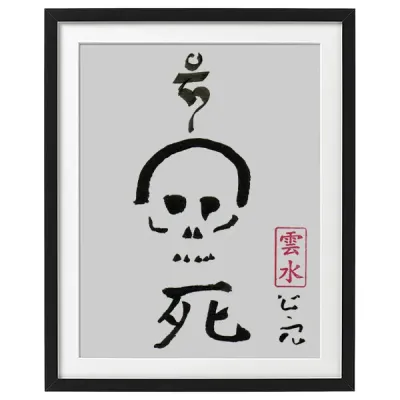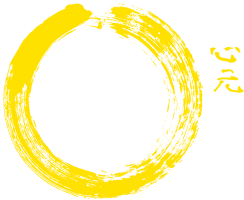death

no old age and death
no end to old age and death,
who is making that statement ?
who is listening to that statement ?
*************
If you wish to be a true dharma practitioner, then constantly keep in mind that death could strike at any moment. it follows you like a shadow, and could take you at any time, maybe even this very day. with this in mind, do not waste your time with mundane worldly pursuits, but focus 100% on your dharma practice. the uncomfortable reality is that 100 years from now, not one single person on this planet, including you, will be alive. you do not know when, or if ever, you will have the opportunity to be born again with the advantages of a human body.
you have been blessed by your own past karmic actions to be born at a time when you are able to receive and put into practice, the wonderful teachings of the past buddhas and patriarchs.
oh my fellow dharma practitioners, only a fool would waste this valuable opportunity !!!
*****
approaches to death in the buddhist tradition
***
theravada
The approch in the Theravada tradition is more a focus on your impermanence, and the impermanence of your body, than on the subject of death itself. My first 15 years of training in Buddhism, which commenced in 1968 were in the Theravada tradition, and I was taught various vipassana meditation techniques for overcoming attachment to all aspects of physical life, including my own body. I know of one Thai forest monastery that has an arrangement with the local mortuary, to call the monks if they have had a body delivered that is in a particular bad state, so that the monks can visit the mortuary to view the deceased, and contemplate the impermanence of the human body.
***
zen
The zen approach to death is, as you would expect, very zen! We are encouraged in the zen tradition to approach death as you would everything else, in other words, just do it, just go with it. Whatever your meditation practice is, which in the zen tradition would be either Shikantaza or working on a Koan. You would approach death in the same way.
When sitting, just sit – When eating, just eat – When sleeping, just sleep – When pissing, just piss – When dying, just die.
If I say much more about death in the zen tradition, it wouldn’t be zen!
***
vajrayana
In the Tibetan tradition, we are encouraged to keep our own inescapable death in mind constantly. This is to keep us focused on not wasting time and procrastinating about getting on with our Dharma practice. All the great teachers of the Vajrayana, such as Milarepa, Padampa Sangye, Shabkar, Patrul Rinpoche etc put great importance on the contemplation of death. There is also a very importand text, writen by Padmasambhava called the “Bardo Thodol”, also known as the Tibetan book of the dead, which explaines just what to expect when you die, and the various bardo states. There are many translations of the text, but my favourite is the one by “Elio Guarisco”. We also have a practice for preparing for death called “Phowa”, which I will say a little about under the “aids to death awareness” section.
In the Tibetan vajrayana tradition, we leap fearlessly into the subject of death.
***
aids to death awareness
***
phowa
The practice of “Phowa” is unique to the Tibetan tradition. It is a technique that allows the practitioners consciousness to leave the body via the brahma aperture in a controled manner. There are various levels of Phowa practice, depending on the practitioners level of understanding and depth of practice. There are Nirmanakaya, Sambhogakaya and Dharmakaya versions. The Nirmanakaya is more complex, and involves visualisations, mantras and recitations etc, while the Dharmakaya approach is very simmilar to that found in zen. (You could in fact say that Dharmakaya is the zen of Tibetan Buddhism). There are various books giving instuction on Phowa, but my advice is do not attempt any of these practices unless you have had them passed on by a qualified teacher. If undertaken too early, without the necessary skill, they can be psychologically damaging, or even bring about premature death. I am now very strict about teaching Phowa practice.
***
cremation ghats
An excellent aid to overcoming attachement to the physical body, is to sit and watch a body dissolve in the flames at a cremation ghat. You need to get as close as you can so as to be able to observe the body as it burns. But be careful not to get too close, as the fire can get quite hot. Also be careful about sitting down wind, as you can get covered in ash, and occasionaly spattered with melting body fat, as happened to me once at Varanasi. I have meditated many times at cremation ghats at Varanasi and at Pashupatinath in Kathmandu, and always found it an exhilarating experience. If you ever go to India or Nepal, my advice is take advantage of this practice while they are still doing open cremations, as this may change in the future.
***
sky burial
A sky burial (as illustrated above) is a practice from the Tibetan tradition, where the body of the deceased is either cut into bits, or just cut open, and left in a high place for the vultures to eat. It is becoming increasingly difficult to attend a sky burial, as the Chinese, I understand, have banned it in Tibet. It is though still carried out in parts of Mongolia. There are two benefits to this practice. One: it helps the consciousness of the deceased to let go and not cling to it’s now dead body. Two: as an act of compassion and of giving, as the vultures are fed. If you ever find yourself in that part of the world, I recommend to attend if you can, although, if you are a lay person, you will need the help of a Lama to get permission.
***
vibhuti
Vibhuti is ash that is applied to the forehead, and sometimes, especialy by some yogis, to other parts of the body. The ash represents your own mortality, so idealy should be obtained from the cremation ghats.
My own practice is to apply vibhuti after my first meditation period in the morning. I place a single vibhuti tilak mark on my forehead as I repeat one of the death awareness mantras.
People tend to think of tilak marks on the forehead is being purely a Sanatana Dharma (Hindu) practice. This is not the case. In fact my own Tibetan yidam, Vajrakilaya, has three lines of vibhuti on his forehead, just the same as Shiva.
I was lucky enough to obtain a good supply of ash from the cremation ghats at Varanasi, which of course is a mix of wood and human remains. But you can obtain a basic version, made from wood and ground rice etc from any supplier of Hindu puja items. You can also buy this version via Amazon.
***
death koan
I was given a death koan in the zen tradition, that was not only used by monks, but also used by the Samurai, as an aid to overcoming the fear of death on the battlefield. I will not give the koan here, as it should only be passed on, like any practice, directly from teacher to student. But it is worked on in the same way as working on the koan “mu”. Working on koans is a unique practice, and should only be done under the guidance of a qualified zen teacher.
*****
life’s for living (no it’s not!)
I often hear people make the statement “life’s for living”. They couldn’t be further from the truth. From the minute you are born, you start your journey towards death. People seem to make this claim just after they have been over indulging in drinking or eating, or some other sense experience, as some sort of justification for their behaviour.
***
living is dying
***
from the moment you leave your mothers womb, you start to die
every day you live is one day closer to death
you have entered a world where every single thing is dying
the people are dying
the animals are dying
the plants are dying
the planet is dying
our sun is dying
our solar system is dying
wake up to reality dharma practitioners
the world you have entered is nothing more than one big hospice
***
all is not lost
Luckily for us as humans, all is not lost. There is one thing that never dies, as it was never born, that which always has been
PURE CONSCIOUSNESS – THE BUDDHA MIND – THE DHARMAKAYA
